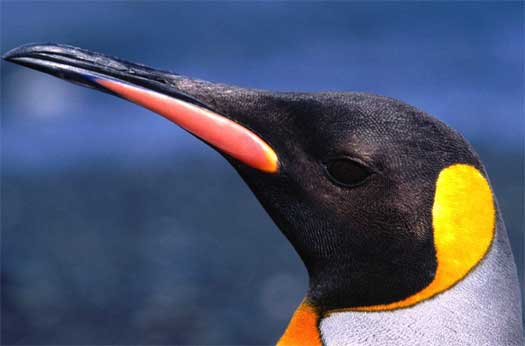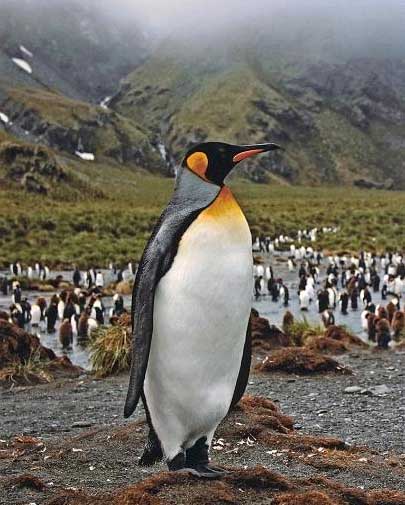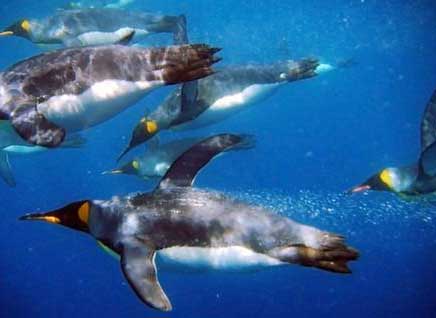King Penguin – Large, Successful Penguin

The king penguin can usually be found in or around the Oceanic Islands. It is very large, weighing about 24 to 35 lb (11 to 16 kg), and stands about 35 in (90 cm) tall, on average. There is only one other type of penguin larger than this: the emperor penguin. Despite its large size, the king penguin’s diet consists of small creatures such as fish, squid, and sometimes krill. This is especially fitting for the king penguin, as it is an excellent diver, sometimes traversing as far as 660 ft (200 m) deep into the ocean. It hunts in intervals, sometimes only once every 2 or 3 months, losing quite a bit of weight in between hunting trips.

To be such an excellent diver, especially in cold waters, seems quite difficult; however, the king penguin is more than equipped for the job. This penguin sports an impressive four coats of feathers, with the outer layer covered in natural oils that waterproof its body completely. The other three consist entirely of insulation to keep the them warm.

The king penguin has a silver/grey back and a white belly, with the exception of bright orange patches around the ears that extend to the neck. Its face and bill are black. Most interestingly, newborn and immature young look entirely different than their adult counterparts. These odd-looking younglings have a very thick coat of light brown feathers that cover their entire bodies. They look so different from the adults of the species that early explorers thought they were an entirely different animal.

When first born, the baby king penguin has a very warm, grey/brown coat. After roughly 12 months, the youngling will go through its first moult. The baby penguin loses its brown coat, which gives way to the signature look of the adult penguins. They generally do not begin breeding until they are at least 3 years old. Interestingly, they always returns to the same area to breed; however, before breeding begins, it will always go through a moulting period. This period lasts about a month, and after this, it will return to its breeding area to find its partner.
